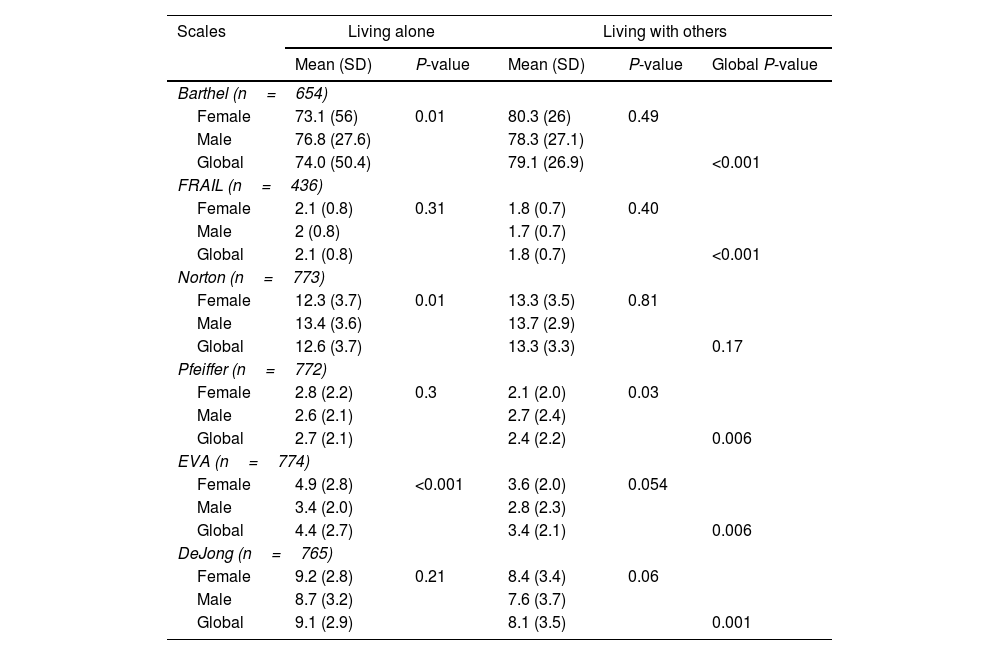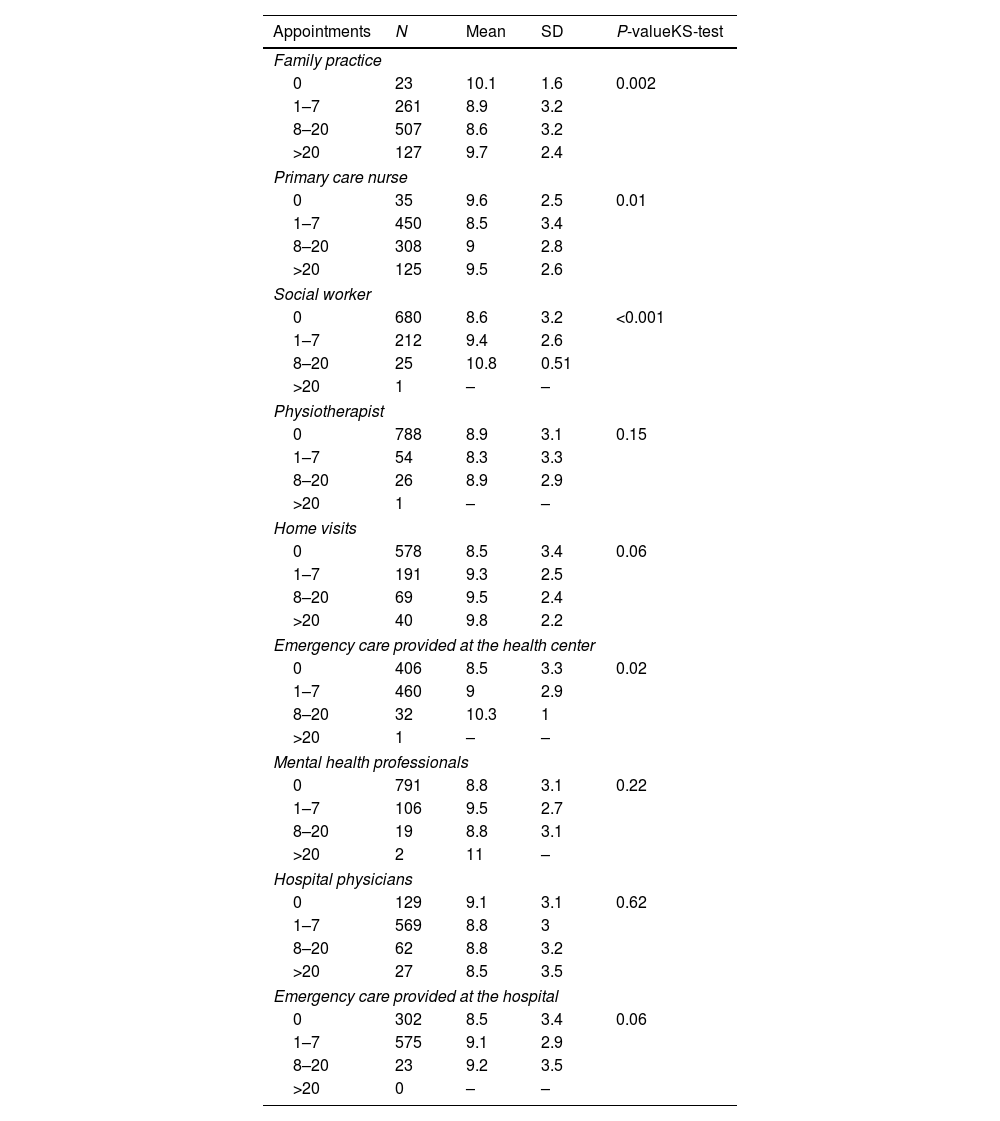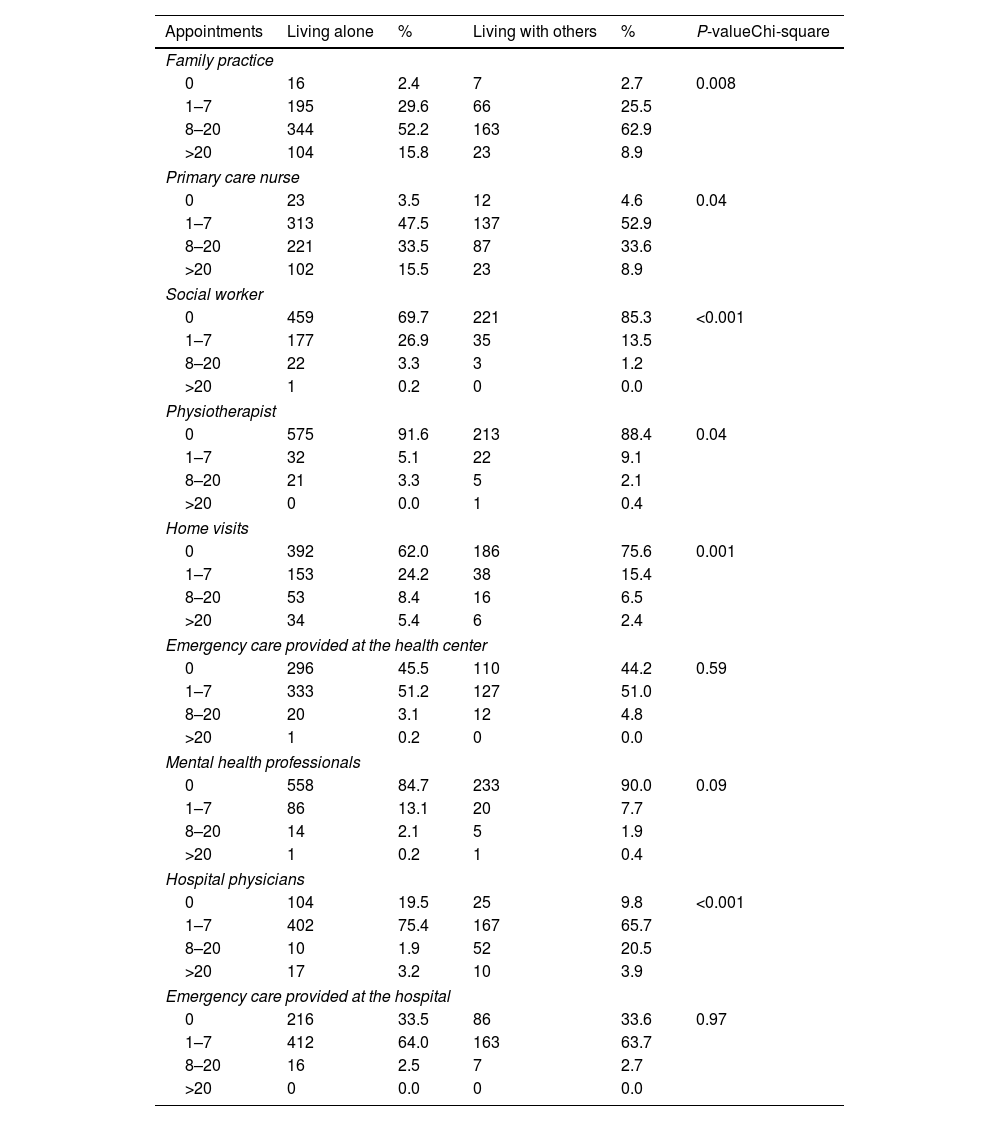An increased number of patients seek help for loneliness in primary care.
ObjectiveTo analyze whether loneliness was associated with a higher utilization of healthcare facilities.
MethodsObservational, retrospective study based on the review of routinely coded data in the digital medical record system in a random sample of patients aged 65 or older, stratified by population size of their residence area. A minimum sample size was estimated at 892 medical records. Loneliness was defined as the negative feeling that arises when there is a mismatch between the quantity and quality of a person's social relationships and those, they desire. Thirty-three primary care nurses (30 females and 3 males) were reviewing the data.
ResultsA total of 932 medical records of patients were reviewed (72% belonged to female patients). Of these, 657 individuals were living alone (71.9%). DeJong Scale average scores was 8.9 points (SD 3.1, 95CI 8.6–9.1). The average annual attendance to primary care ranged from 12.2 visits per year in the case of family practice, 10.7 nurse, 0.7 social workers. The average number of home visits was 3.2, and the urgent consultations attended at health centers were 1.5 per year. Higher feelings of loneliness were associated with extreme values in the frequency of healthcare resource usage. Compared to their peers of the same age, the additional healthcare resource consumption amounted to €802.18 per patient per year.
ConclusionLoneliness is linked to higher healthcare resource usage in primary care, with individuals experiencing poorer physical and mental health utilizing these resources up to twice as much as their peers of the same age.
Un número creciente de pacientes busca ayuda en atención primaria por experimentar soledad.
ObjetivoAnalizar si la soledad estaba asociada con una mayor utilización de los servicios sanitarios.
MétodosEstudio observacional, retrospectivo, basado en la revisión de datos codificados rutinariamente en el sistema de registro médico digital en una muestra aleatoria de pacientes de 65 años o más, estratificada por el tamaño de la población de su área de residencia. Se estimó un tamaño mínimo de muestra en 892 registros médicos. La soledad se definió como el sentimiento negativo que surge cuando hay un desajuste entre la cantidad y calidad de las relaciones sociales de una persona y aquellas que desea. Treinta y tres enfermeros de atención primaria (30 mujeres y 3 hombres) revisaron los datos.
ResultadosSe revisaron un total de 932 historias médicas de pacientes (72% mujeres). De estos, 657 personas vivían solas (71,9%). La puntuación media en la Escala de DeJong fue de 8,9 puntos (DE 3,1, IC 95% 8,6-9,1). La asistencia anual promedio a atención primaria varió desde 12,2 visitas por año en el caso de la práctica familiar, 10,7 enfermería, 0,7 trabajadores sociales. El número promedio de visitas domiciliarias fue de 3,2, y las consultas urgentes atendidas en centros de salud fue de 1,5 por año. Las puntuaciones en la escala de soledad estuvieron asociadas con la frecuentación. Comparado con sus pares de la misma edad, el coste adicional de los recursos de atención sanitaria ascendió a 802,18€ por paciente por año.
ConclusiónLa soledad está vinculada a una mayor frecuentación en la atención primaria, con individuos que experimentan peor salud física y mental utilizando estos recursos hasta el doble que sus iguales de la misma edad.












